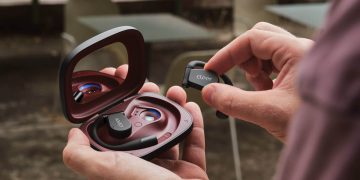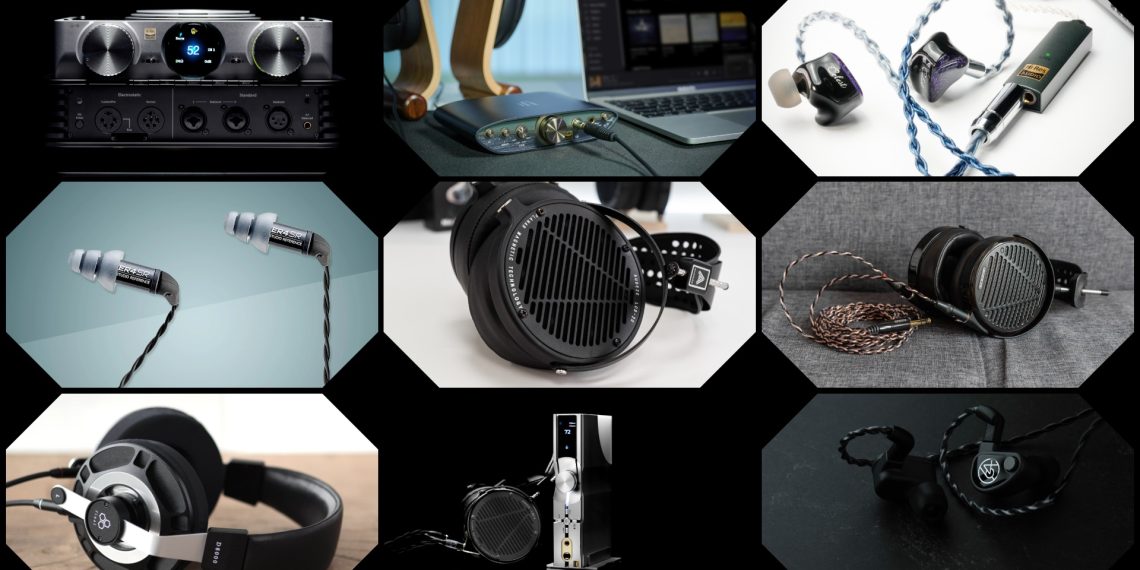Etymotic ER4XR – Review – Microscopes for the Ears
Intro:
Veteran earphone fans out there will certainly recognise this brand! Etymotic has had an excellent reputation with its single balanced-armature designs; particularly amongst professionals within the audio industry. With the Etymotic ER4XR we see that Etymotic’s famous and long-standing ER4 design has had a tweak to add a little more bass to the mix.
Pros:
- Very accurate and resolving
- Simple no-nonsense design
- Nicely designed and replaceable cable
- Carry case
- Extra bass is restrained and well balanced
Cons:
- Not recommended for poor quality recordings
- Deeply inserted tips will not suit everybody (foam tips included)
Design and appearance:
There are few changes to the look of the ER4XR when compared to previous versions; it has the same styling, it’s still black and the eartips are the same. However, when something works so well, why fix it? With earphones such as this, Etymotic is right to feel that purchasing decisions will be made on sound quality requirements alone, rather than gimmicks such as styling and colour.
Durability & build quality:
Again, there are minimal changes here, if any. The cable is sturdy but flexible, and where it splits we have braided cable going into each driver. The cable is replaceable, being attached using MMCX connectors. The impression is definitely of a product which is built to last in demanding environments.
Accessories are decent enough, with a selection of eartips (standard triple flange, a larger size triple flange and a few memory foam tips), a few extra filters with a changing tool and shirt clip/jack adaptor. Also there is a carry case which is semi-rigid, and roomy enough to keep a few extra bits in as well as the earphones.
Comfort:
Due to Etymotic’s triple flange tips and the need to insert the ER4XR deeply in the ear, some may have comfort issues with the fit of this design. There are some memory-foam eartips included also, and a plethora of after-market tips should this be a problem.
That aside, the Etymotic ER4XR is very stable and comfortable; users can concentrate 100% on the audio.
Suitability for Intended Application:
Etymotic has long enjoyed a dedicated user base of audio professionals, and the ER4XR will not disappoint. However, more and more end-users have found Etymotic’s products as ideal for enjoying their music, and the Etymotic ER4XR is sure to please this group with some added bass when compared with the older ER4S. Mercifully, Etymotic have been quite measured with this additional bass; it’s balanced well with the rest of the sound and does not threaten to upstage the famous midrange of the ER4 design.
Sound isolation:
Isolation is fairly good; a reduction of around 30dB is quoted on the box which is certainly good enough. With the triple-flange tips, exterior sounds are deadened enough to avoid distractions but it’s still possible to hold a conversation with the earphones still in position (without music on, of course).
Sound characteristics:
The Etymotic ER4XR compares well to the other newly released ER4, the ER4SR. Both are very similar in terms of their sound, with a little bit more bottom end on the ER4XR. The accent is on the words ‘little bit’; these are not for bass fans, so please look elsewhere if you’re all about that bass! Etymotic have stayed true to their loyal followers, as the increased bass of the ER4XR does not impinge on the midrange detail and clarity that this design is famous for.
Bass:
A good seal with the eartips is still important, but not quite as important as it was with the older ER4S! There is an appreciable amount of extra bass which starts quite low, adding a nice weight to the presentation. Given the popularity of previous designs, both with audio professionals and music fans, perhaps this is a nod towards the second group. The additional bass adds more than a hint of musicality, warmth and vigour.
As might be expected, bass is very nicely controlled and well balanced with the rest of the frequency spectrum, working perfectly with midrange which adds some very realistic harmonics..
Mids:
Midrange frequencies foster a blend of revelation and adventure. Revelation, due to the relentless way it exposes details within the audio, and adventure for the same reason; some older or badly made recordings might be difficult to listen to, and low-bitrate encoded tracks will not do well. Additionally, there are unexpected things to be discovered within music collections everywhere. Listening to a German film theme from 1971 (Peter Schirmann – Fluchtweg St. Pauli), it’s possible to hear what was on the tape before they recorded! Always make sure your tape is properly erased – German music producers of the early 1970s, take note.
Those who have a sensitivity to high-midrange frequencies might wish to think carefully as the onset of listener fatigue may be quick for some. The rewards more than outweigh these paltry pitfalls however, as music can be laid bare and almost deconstructed by the quality on offer here. No sonic stone is unturned! Things are handled well; even with a chaotic amount of action going on in the music, the ER4XR does it standing on its head.
Treble:
Next to the power of the midrange, the treble settles for second fiddle. There are no sharp edges here. Treble is tuned to provide support for higher harmonics and percussion, but there is a chance of the ER4XR sounding a little strident in terms of lower treble/upper mids. Female vocals and trumpet sections can be a little hard-edged on occasion, depending on the production quality.
Soundstage & Separation:
With the accuracy on offer from the Etymotic ER4XR (and ER4SR), it’s no surprise that separation and imaging are very impressive indeed. It’s difficult not to be distracted by that oboe player skulking on the far left of the presentation, or percussion which gives a vibraslap round the face.
Soundstage is good; the music appears to be coming from further out than the deeply inserted ER4XR’s physical limits but the near-neutral tuning and accuracy of the ER4XR does impose limits on this, making more distant instruments appear closer.
Music Genres Good For and Why:
The ER4XR is perfect for well-produced music of all types, so long as it is encoded well (in the case of digital music). Older recordings may be a hit or miss affair with music from the 1960s and earlier, depending on the production and mastering quality. Frequency peaks in the wrong place will become very apparent, and of course artefacts from the original recording medium (such as record pops and scratches) will not escape undetected.









 HiFiHeadphones Best Buy list
HiFiHeadphones Best Buy list
Comments 1